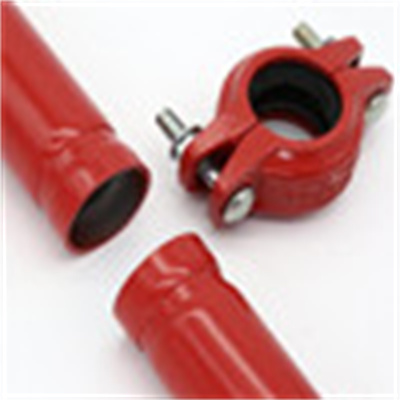Connection mode of fire pipe: thread, groove, flange, etc. The internal and external epoxy composite steel pipe for fire protection is a modified heavy-duty anti-corrosion epoxy resin powder, which has excellent chemical corrosion resistance. It fundamentally solves many problems such as surface rust corrosion and inner wall scaling of similar products after long-term use, so as to avoid internal blockage affecting the use, so as to greatly improve the service life of special fire-fighting pipes. Due to the addition of flame retardant materials in the coating materials, the temperature resistance of the product is improved compared with other similar products. Therefore, it will not affect the use when the ambient temperature rises sharply. The service life and performance of internally and externally coated fire pipes are much better than those of galvanized pipes. The color is red.
Our factory specializes in producing fire pipe, galvanized steel pipe, powder coating pipe, powder coating pipe and 6-inch steel pipe. Application: fire water supply, gas supply and foam medium transportation pipeline system. The product quality passes the customs and passes multiple tests before leaving the factory. Comply with national and international quality standards.
(1) High mechanical properties. Epoxy resin has strong cohesion and dense molecular structure, so its mechanical properties are higher than general thermosetting resins such as phenolic resin and unsaturated polyester.
(2) The coating of plastic coated fire pipe adopts epoxy resin, which has strong adhesion. Epoxy resin curing system contains epoxy group, hydroxyl group, ether bond, amine bond, ester bond and other polar groups with great activity, which gives epoxy cured products excellent adhesion to metal, ceramics, glass, concrete, wood and other polar substrates.
(3) Small curing shrinkage. Generally 1% ~ 2%. It is one of the varieties with the smallest curing shrinkage among thermosetting resins (phenolic resin is 8% ~ 10%; unsaturated polyester resin is 4% ~ 6%; silicone resin is 4% ~ 8%). The linear expansion coefficient is also very small, generally 6 × 10-5/℃。 Therefore, the volume changes little after curing.
(4) Good workmanship. Epoxy resin basically does not produce low molecular volatiles during curing, so it can be formed under low pressure or contact pressure. It can cooperate with various curing agents to produce environment-friendly coatings such as solvent-free, high solid, powder coatings and water-based coatings.
(5) Excellent electrical insulation. Epoxy resin is a thermosetting resin with good antistatic properties.
(6) Good stability and excellent chemical resistance. Epoxy resin without alkali, salt and other impurities is not easy to deteriorate. As long as it is properly stored (sealed, free from moisture and high temperature), the storage period is 1 year. After the expiration date, if the inspection is qualified, it can still be used. Epoxy curing compound has excellent chemical stability. Its corrosion resistance to alkali, acid, salt and other media is better than that of unsaturated polyester resin, phenolic resin and other thermosetting resins. Therefore, epoxy resin is widely used as anti-corrosion primer. Because the cured epoxy resin has a three-dimensional network structure and can resist the impregnation of oil, it is widely used in the inner wall lining of oil tanks, oil tankers and aircraft.
Figure 1 fire pipe
Figure 1 fire pipe (5 pieces)
(7) The heat resistance of epoxy curing compound is generally 80 ~ 100 ℃. The heat-resistant varieties of epoxy resin can reach 200 ℃ or higher.
Post time: Apr-07-2022





